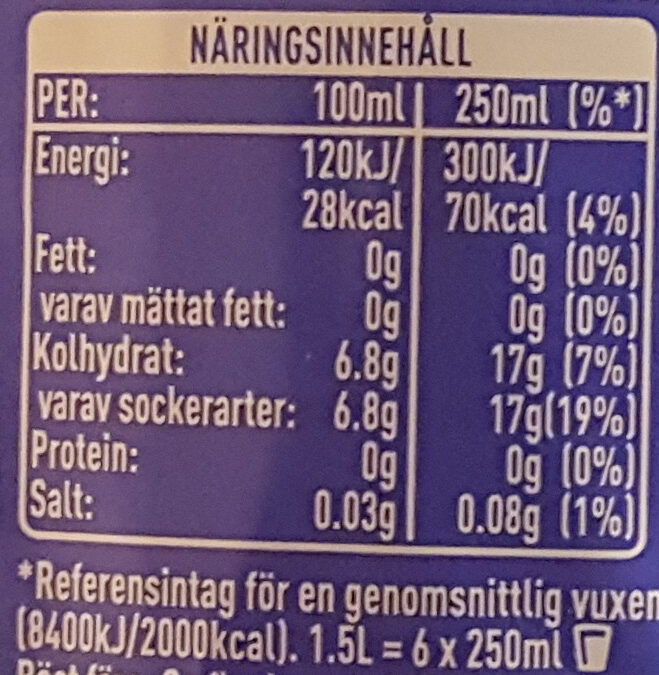Fanta Shokata Lemon & Elderflower - 1.5 l
This product page is not complete. You can help to complete it by editing it and adding more data from the photos we have, or by taking more photos using the app for Android or iPhone/iPad. Thank you!
×
Barcode: 5000112636086 (EAN / EAN-13)
Common name: Kolsyrad läskedryck med citron- och fläderblomssmak, med socker och sötningsmedel.
Quantity: 1.5 l
Packaging: Plastic, Pet-polyethylene-terephthalate
Brands: Fanta
Categories: Plant-based foods and beverages, Beverages, Plant-based beverages, Carbonated drinks, Fruit-based beverages, Artificially sweetened beverages, Sodas, Fruit sodas, Sweetened beverages
Manufacturing or processing places: Sweden, Sverige
Stores: Coop
Countries where sold: Sweden
Matching with your preferences
Environment
Packaging
Transportation
Report a problem
Data sources
Product added on by akitainu
Last edit of product page on by packbot.
Product page also edited by jumati, openfoodfacts-contributors, roboto-app.










